When we speak of Jagaddhatri Puja in Chandannagar, the first thing that reminds us is that the puja is celebrated here for four days just like Durga Puja. But there are a number of families who celebrate the puja in Nabami tithi where the pujas of Saptami, Astami and Nabami are held in a single day.
This year on the auspicious day of Nabami I visited Chandannagar to visit some of the household Jagaddhatri pujas. Though there are a number of household pujas in the town I visited six such families where the puja is being celebrated for more than a century.
Manna Bari, Khalisani Manasatala: The Jagaddhatri puja is celebrated here from 1308 Bangabda (1901 A.D) and when I visited the dalan the priest is performing the arati.
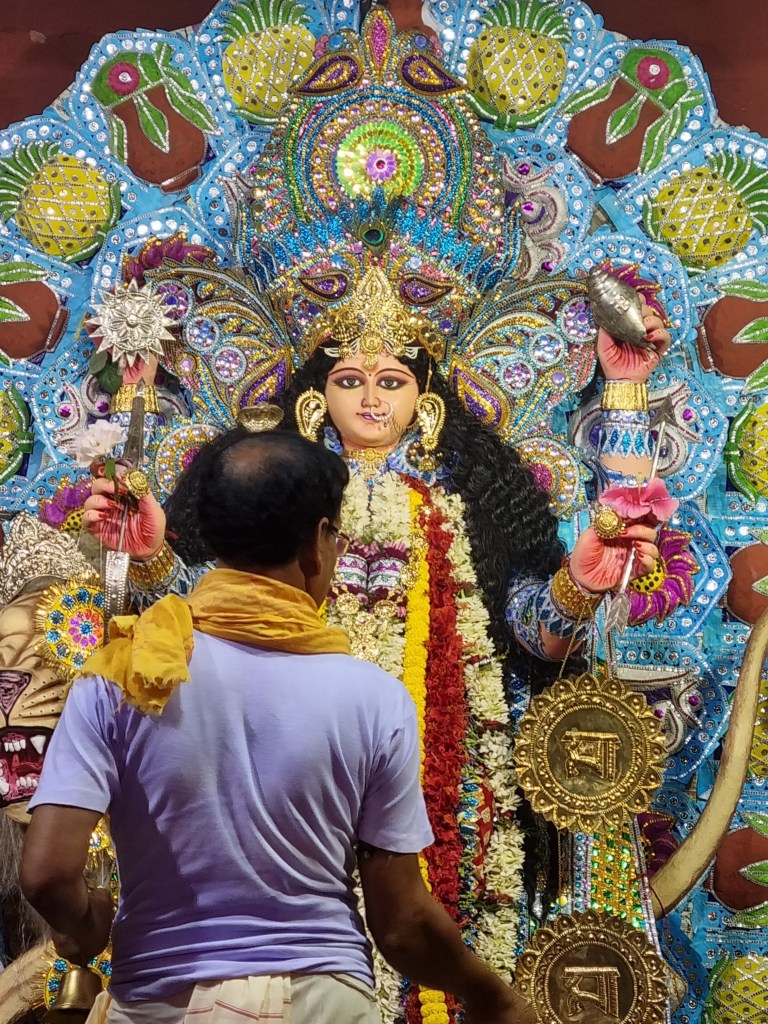
The puja here is held according to Baisnav rituals. Both Kumari Puja and Dhuno porano are meticulously performed. I was told that the puja was started by Jogindranath Manna and Raghunath Manna. When the puja started in the beginning of the twentieth century the dalan was not there. I came to know that previously the idol was prepared in the household but now the practice has been stopped in the recent years. Annabhog is offered to the goddess apart from different types of sweets, and all are prepared in the house. An unique feature of this puja is to offer luchi and bode (a type of sweet) to all after the end of Astami puja.
Ghosh Bari, Fatakgora: This family celebrates Durga Puja, Kali Puja and Jagaddhatri Puja in the same dalan. I was pretty lucky to remain present there during the time of Durga Puja a couple of years back. The puja was started in the year 1798.
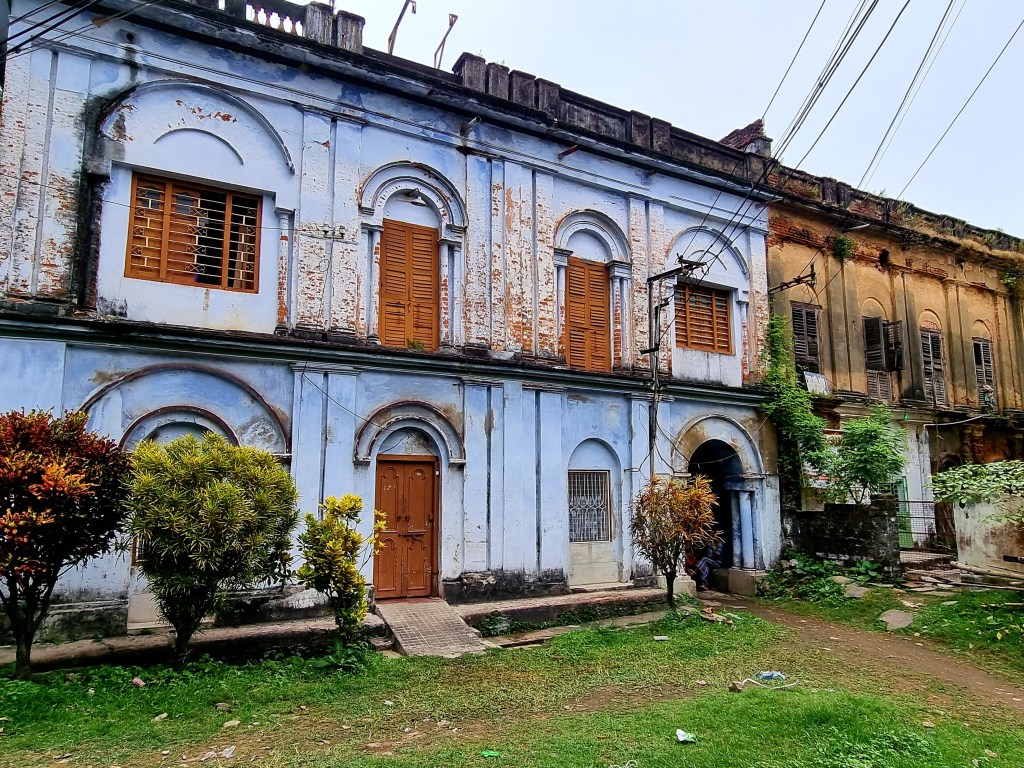
The puja is performed according to Baisnav rituals and hence, there is no balidan here. I came to know that the same artisan prepares all the three idols – Durga, Kali and Jagaddhatri and the same family is continuing for generations.

All the three pujas are performed in a single day. Kumari Puja and Dhuno porano are not practised here. There are two Shiva temples outside the house built in 1817 and daily worship is performed there.
Pal Bari, Surerpukur: I had to take a toto to reach Pal Villa in Surerpukur. On my way I came across a number of barowari Jagaddhatri pujas and all the idols are tall and beautifully decorated. In some pandal I found puspanjali is being offered. When I reached Pal Villa it’s almost afternoon. The weather was fine.

The beautiful dalan has received a fresh coat of paint. The puja was started by B. B. Pal way back in 1864 A.D. The idol of Maa Jagaddhatri is prepared in the thakurdalan. I was told that kathamo puja is held on the day of Bijaya Dasami. The puja is celebrated according to Baisnav rituals.
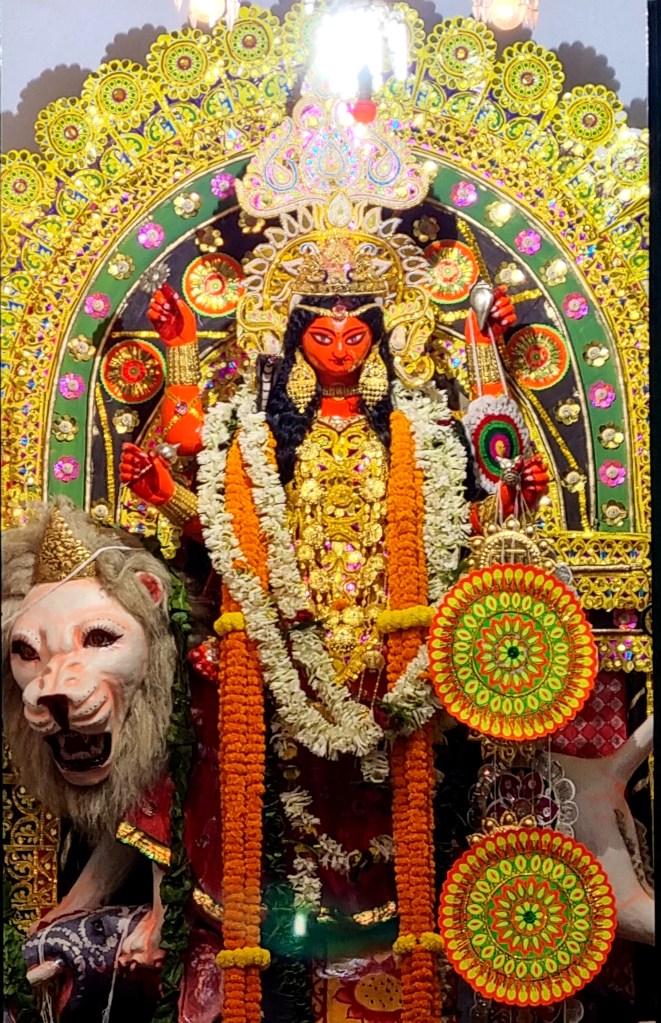
The colour of the face of the goddess is like the colour of stem of siuli flower. The practice of Kumari Puja and Dhuno porano are celebrated in this household. Annabhog is not offered here; instead luchi bhog is offered to the goddess. The beautiful chalchitra together with the protima adds grandeur to this puja.
Pal Bari, Bakshi Goli: Less than a ten minute walk from Surerpukur will land you to Pal Bari in Bakshi Goli. The Jagaddhatri puja of Pal Bari is celebrated for more than two centuries. The striking feature of the puja is the goddess.
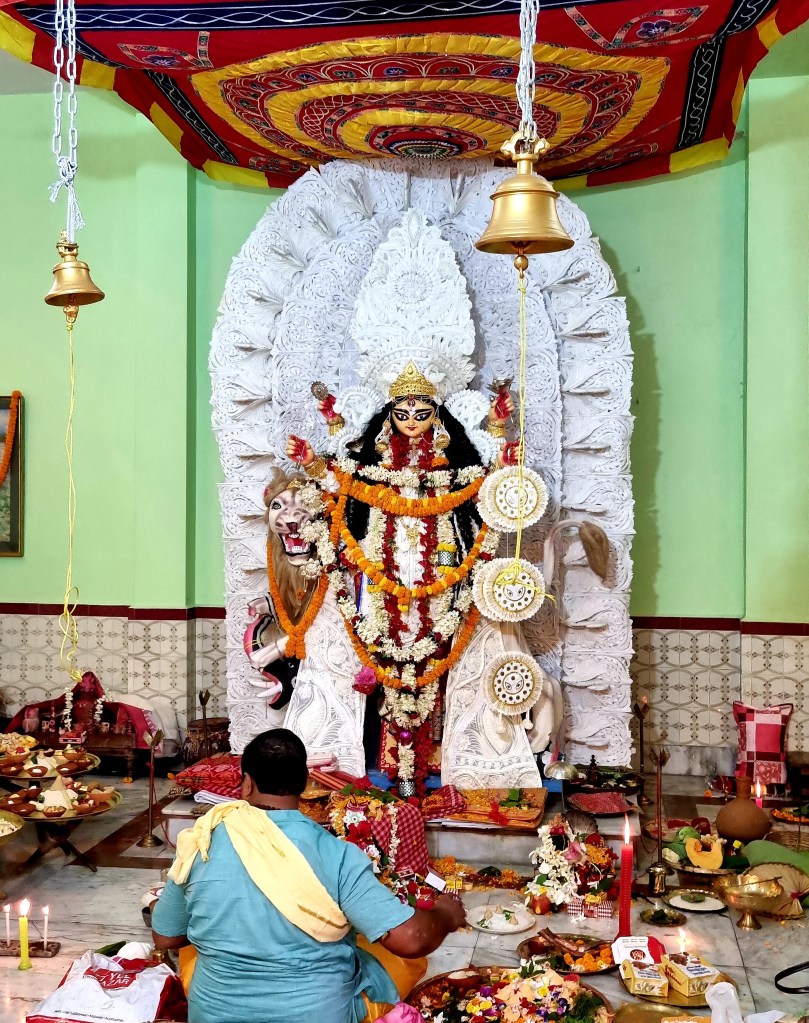
When I visited here the puja is going on. I was told that previously the idol is prepared here but now it is brought from outside. I was completely mesmerised by the beauty of this goddess. Luchi bhog is offered to the goddess apart from different types of fruits and malpoya ( a type of sweet). The puja here is held according to the rules laid down in Bisuddha Siddhanta.
Ghatak Bari, Barasat: As my next destination is Barasat, I had to take a toto to reach there but it took more than the required time as the road is congested. Reaching Barasat I had to walk for about five minutes to reach Ghatak Bari in Barasat.
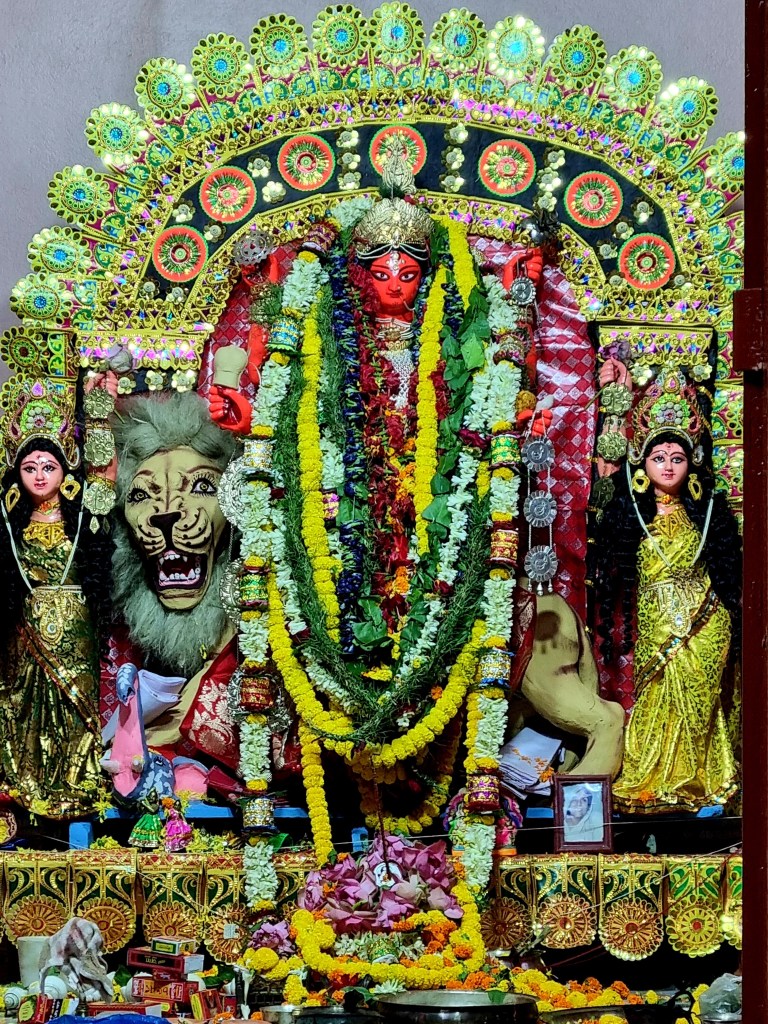
The puja is celebrated here for more than two centuries. The puja is performed according to tantric rituals. Balidan (goat sacrifice) is held here. The protima is built in the thakurdalan following the necessary rituals. Kumari Puja and Dhuno porano are held here. As far as the ritual of dhuno porano is concerned, I was told that it started roughly sixty years back though the puja is more than two hundred years old and was started by Kartick Chandra Ghatak. Another unique feature of the idol is the presence of Jaya and Bijoya by the side of Maa Jagaddhatri.
Nandi Bari, Barasat: This family puja is one of the oldest in Chandannagar. This year the Jagaddhatri Puja is held in ghat as a member of a family died recently. I was told this year is the only year in which the puja is held without the idol.

The puja was started by Biharilal Nandi. The protima is built in the thakurdalan. All rituals – Kumari Puja and Dhuno porano are held here. The puja is held following Baisnav rituals. I was told an unique thing about the idol – the existence of twin lions on both the sides of the goddess.
I want to thank Sri Ramesh Manna, Sri Anirban Ghosh, Sri Soumya Subhra Pal, Sri Ashok Kumar Pal and Sri Indratosh Ghatak for helping me in providing information about their respective family pujas.
To go there: The easiest way to visit Chandannagar is by train. Less than an hours journey will land you to Chandannagar but do remember the household pujas are held in the day of Nabami.
Date of posting: 13th November, 2021.
